What are solar panels made of? If you’ve ever wondered about the materials used in solar panels, this article is for you. We’ll dig into the various materials employed in crafting solar cells, both raw materials and synthetic additives.
While materials may differ among solar panel manufacturers, this article wants to provide a comprehensive understanding of the materials prevalent in the solar industry.
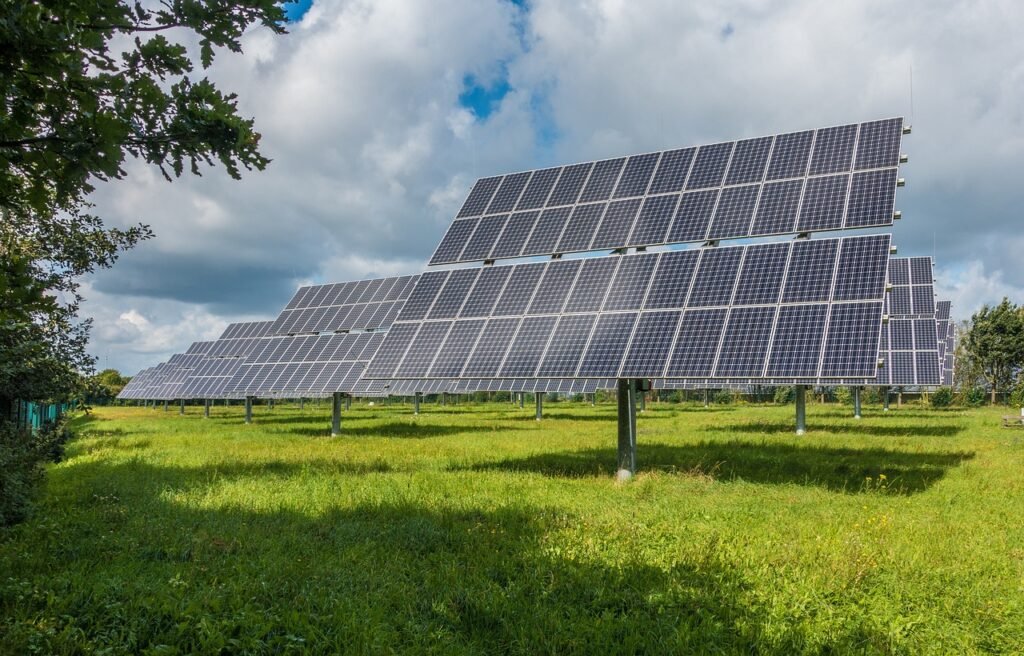
Frame Materials
Frames play a crucial role in solar panel design, holding components together, providing protection against the elements, and enhancing durability. The majority of solar panel frames use anodised or powder-coated aluminium.
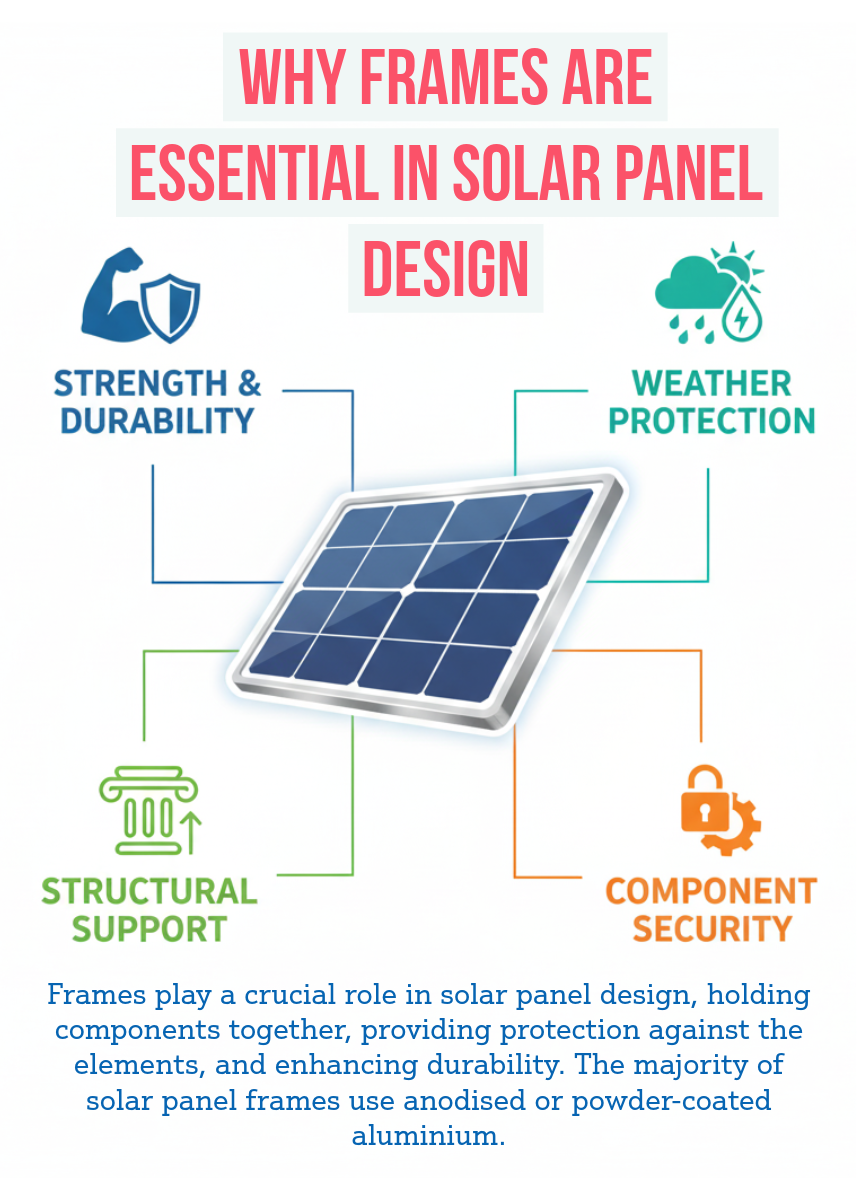
Anodised Aluminium Solar Panel Frames
High-quality solar panels typically feature an anodized aluminium frame, offering numerous benefits. Notably, it can reflect more heat, improving the overall conversion efficiency of a solar cell. Anodized aluminium is easy to maintain, resistant to sunlight, and often fare better against rays than powder-coated alternatives.
However, the con is that this type of solar frame only comes in silver, posing a challenge for architects and solar panel companies seeking to integrate panels seamlessly into a building’s aesthetic.
Powder Coated Solar Panel Frames
Solar panels with powder-coated aluminium frames are perfect for those who prioritise style. Typically available in black, these frames blend well with dark shingles and can be customised in various colours to match a building’s elements. The powder coating technique allows for glossy, matte, or satin finishes.
The main downside is that powder-coated frames are more prone to scratching compared to anodized alternatives. Nevertheless, the advantage lies in the repairability of powder-coated materials, unlike scratches on anodized aluminium frames.
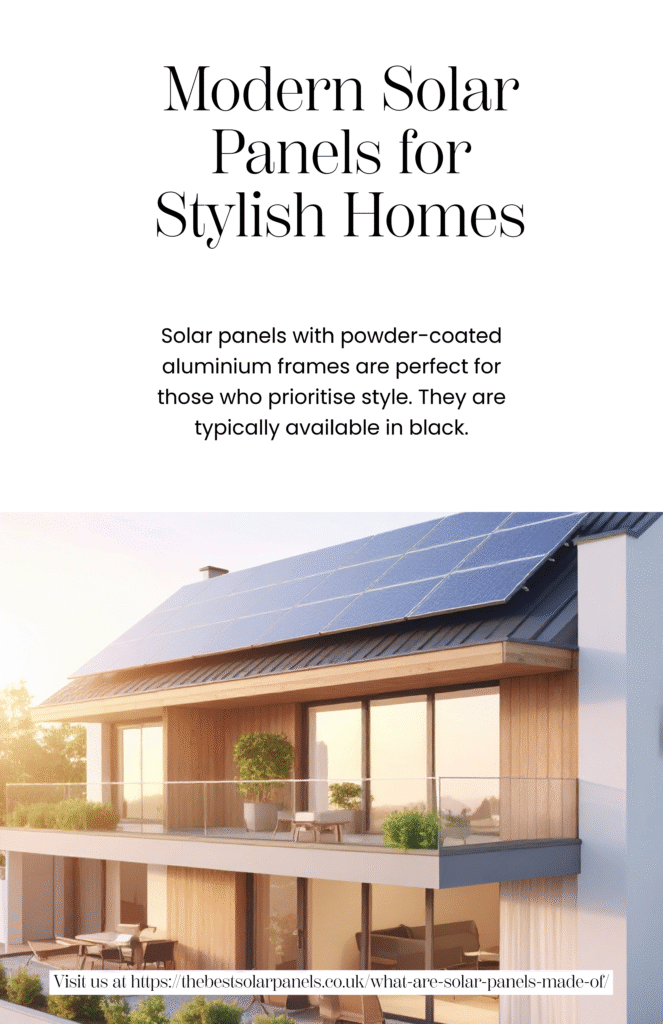
Backing Material
Backing materials play a crucial role in solar panel design, providing reliable electrical conductivity to enhance efficiency and insulation for safety against electrical shock. These backing materials, often called photovoltaic backsheets, are laminated from different materials with varying properties, which can differ significantly between manufacturers.
Solar Cell Materials
Solar cells, the heart of a solar panel, convert sunlight into electricity through the photovoltaic effect. Let’s explore the materials used to make solar cells.
Crystalline Silicon Cells
Silicon-based solar cells are the most popular choice today. Crystalline silicon (c-Si) cells can be categorised based on the crystal size of the resulting silicon wafer:
- Polycrystalline silicon: Commonly known as ‘multicrystalline silicon,’ these cells are the most widespread due to their cost-effectiveness resulting from a more efficient manufacturing process involving molten silicon.
- Monocrystalline silicon: These highly efficient cells are found in premium solar panels. And they offer more power than their counterparts but come at a higher cost. This type of cells are recognisable by a distinctive pattern of small white diamonds, the result of how the wafers are cut.
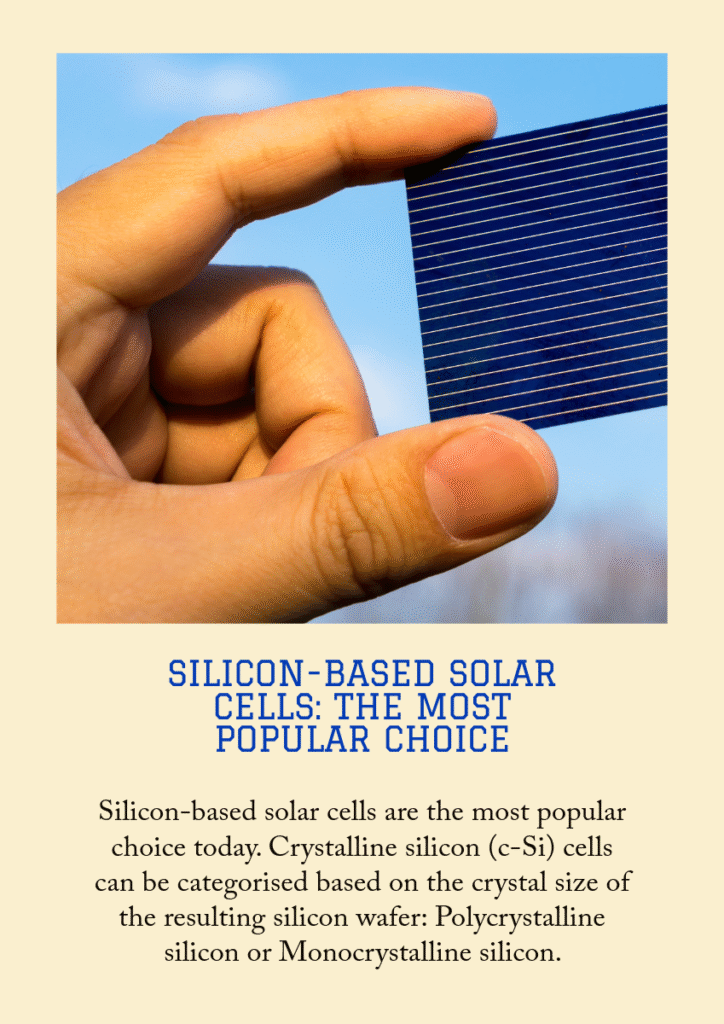
Thin Film Cells
Solar panels incorporating thin-film solar cells are less widespread than crystalline silicon alternatives. While they are typically more cost-effective, their performance does not match that of c-Si technology. A notable advantage of thin film cells lies in their flexibility, making them slightly more durable.
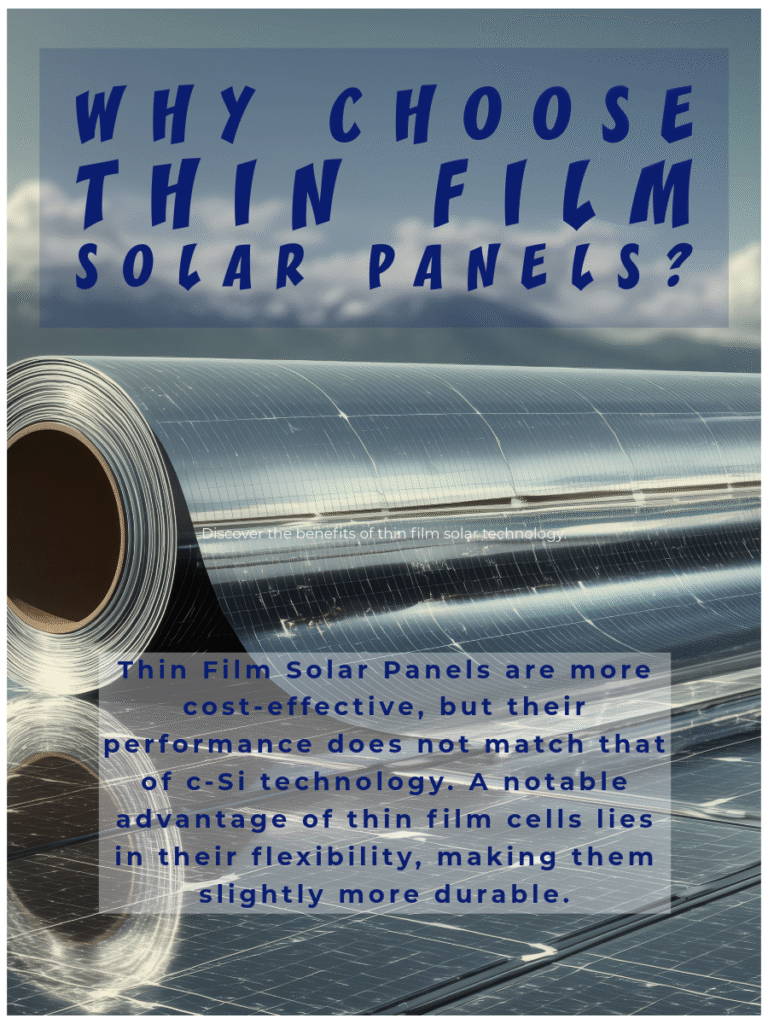
Recent advancements in thin-film technology have narrowed the performance gap, with some thin-film cells surpassing polycrystalline silicon cells. However, they still lag behind the efficiency of monocrystalline silicon cells.
The most popular materials in thin film solar cells include:
- Amorphous Silicon: Widely used in thin film solar cells, it utilizes only about 1% of the silicon found in a traditional crystalline silicon cell, making it significantly more economical.
- Cadmium Telluride: These solar cells are the only thin film product that has rivalled the performance of monocrystalline silicon cells. However, the drawback is that cadmium is highly toxic, raising concerns about the disposal of old cadmium cells.
- Copper Indium Gallium Selenide (CIGS): CIGS is another conventional thin film solar cell technology. They can be 80 to 160 times thinner than crystalline silicon.
Anti-reflective Coatings
Special coatings are often applied to reduce reflection to enhance solar cell efficiency. Anti-reflective coatings enable photovoltaic solar cells to absorb more light, thereby increasing efficiency. Silicon nitride is a common material used for these coatings.
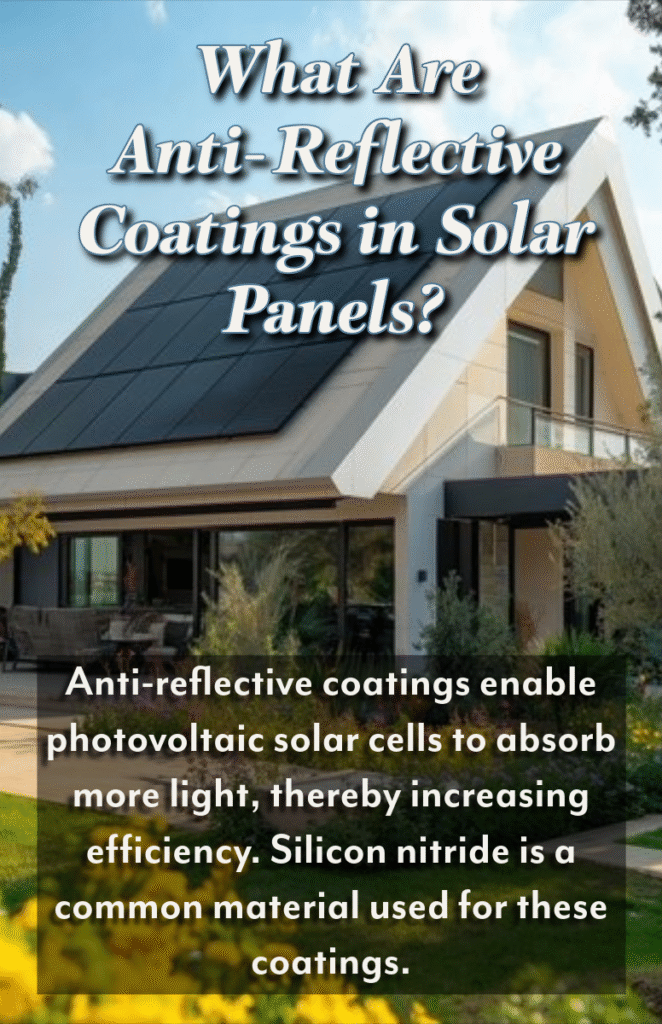
Other Materials Worth Mentioning
Solar panel construction involves various materials, including:
- Glass: Widely used in solar panel design, glass is above conventional silicon solar cells. In thin film technologies, cells are typically sandwiched between two glass panels, contributing to increased weight.
- Copper: This material is found in various components of a solar panel. So, copper is used in cables (including grounding cables) and inverters that convert DC to AC.
- Plastic: Commonly used to house junction boxes at the bottom of a solar panel, plastic facilitates the connection of multiple panels to form a single system.
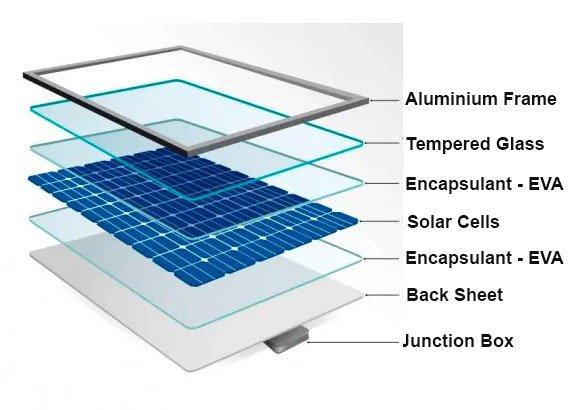
Hazardous Materials Used in Solar Panels
While not ideal, some materials used in solar panels can be hazardous to health and the environment. Toxic substances are occasionally employed to enhance efficiency and durability. Refer to the following table for details on dangerous materials found in solar panels.
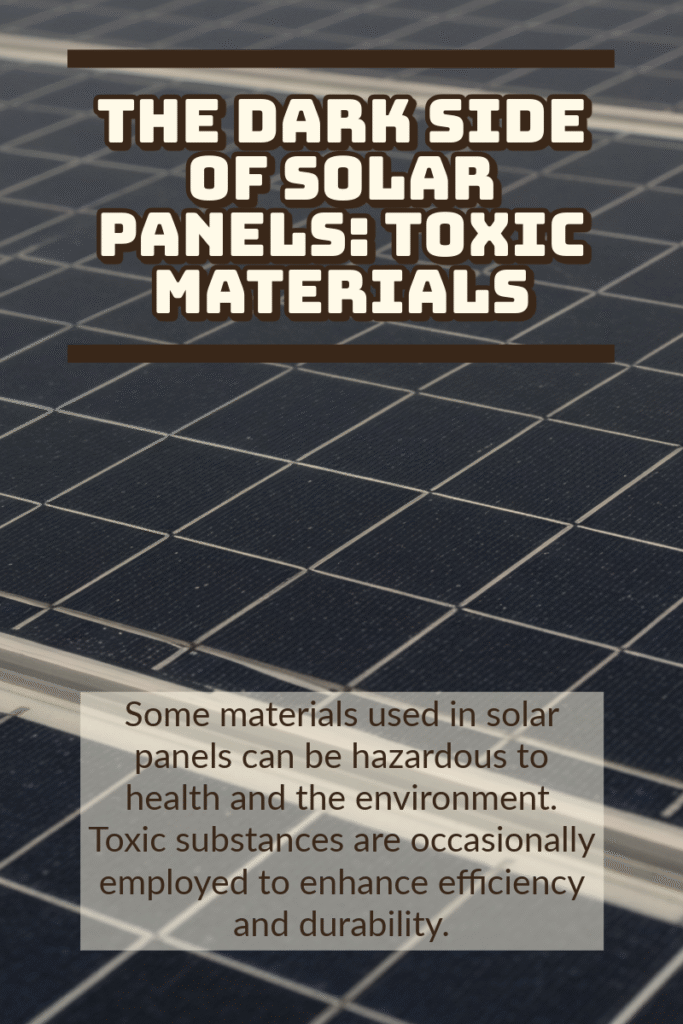
- Cadmium Telluride: It’s the main compound in cadmium thin film technology. So, cadmium telluride is considered safe during use but poses challenges in the manufacturing and disposal of cadmium solar cells.
- Copper Indium Gallium Selenide (CIGS): This chemical is toxic to the lungs but is employed as a key compound in CIGS thin-film solar cells.
- Antifreeze: Sometimes it’s used in solar thermal systems to prevent fluids from freezing in colder climates.
As evident, the above mainly pertains to thin-film solar technologies. Traditional silicon solar cells are deemed safe during use. However, the manufacturing process produces silicon tetrachloride, a highly toxic byproduct harmful to plants and animals. Manufacturers must take steps to reduce the release of silicon tetrachloride into the surrounding environment.
While acknowledging that solar panels have environmental concerns, harnessing the sun as an energy source remains one of the best eco-friendly practices.
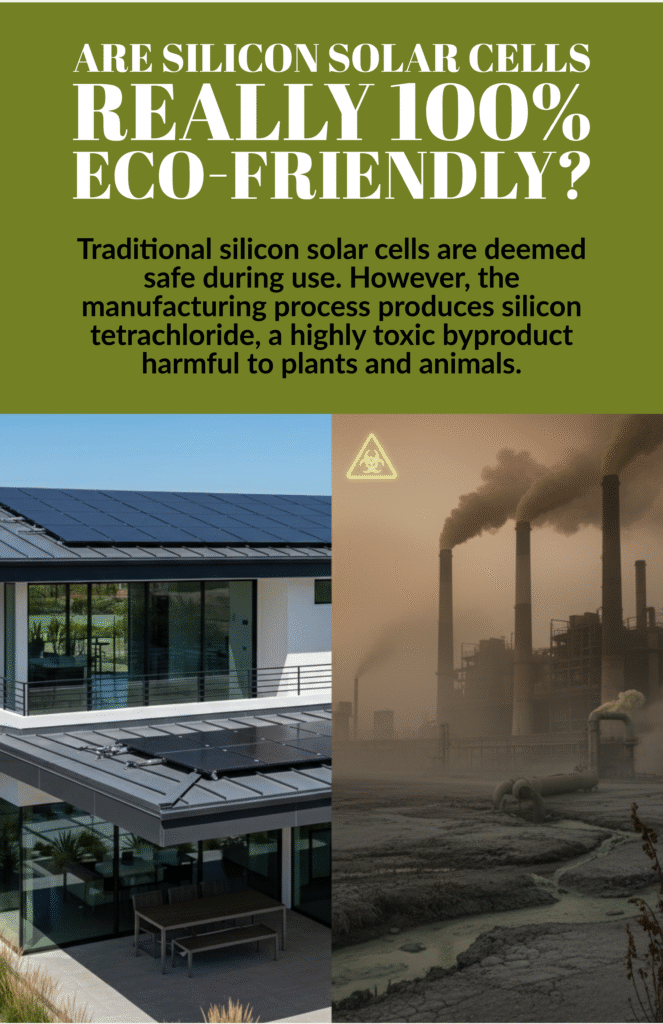
Conclusion
The manufacturing of solar cells involves a diverse range of materials, many of which are exotic and have gained prominence with the surge in the solar energy industry.
The composition of materials in a solar panel is primarily dictated by the type of solar cells it contains. So, these cells can be silicon-based or thin-film cells, although they use different materials, such as cadmium telluride or copper indium gallium selenide (CIGS).
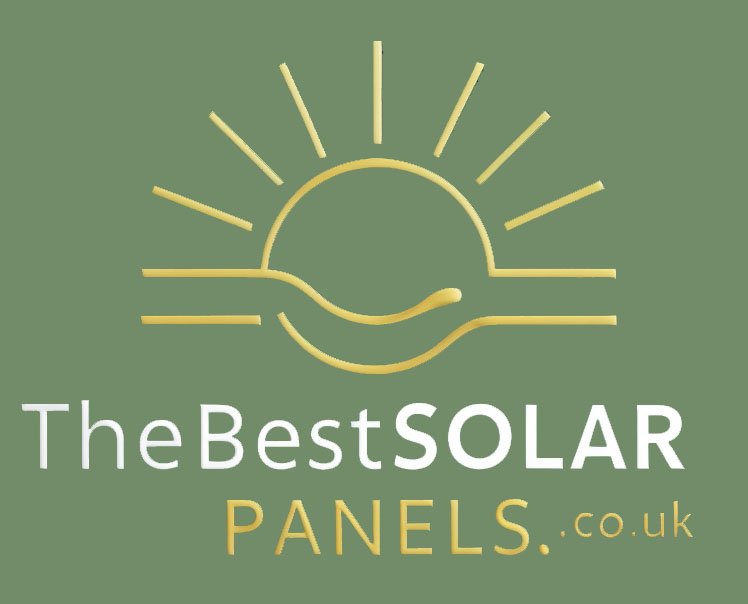


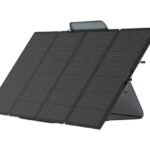
Leave a Reply